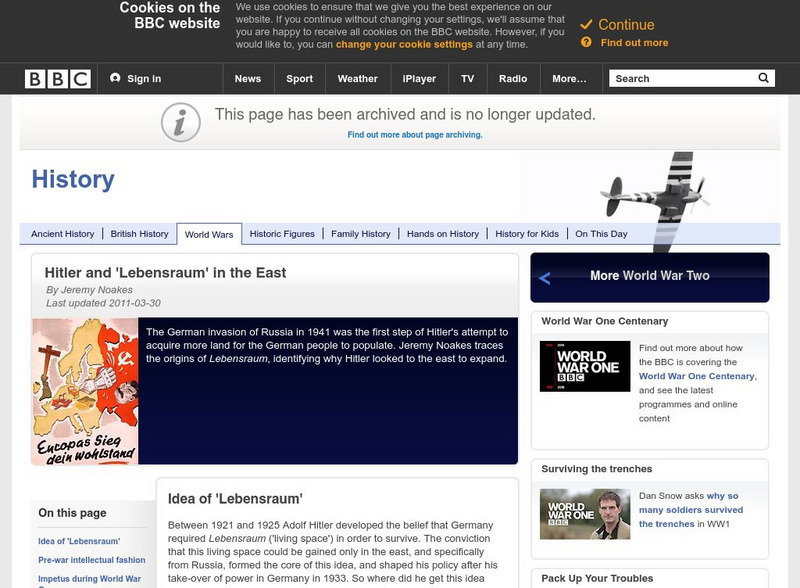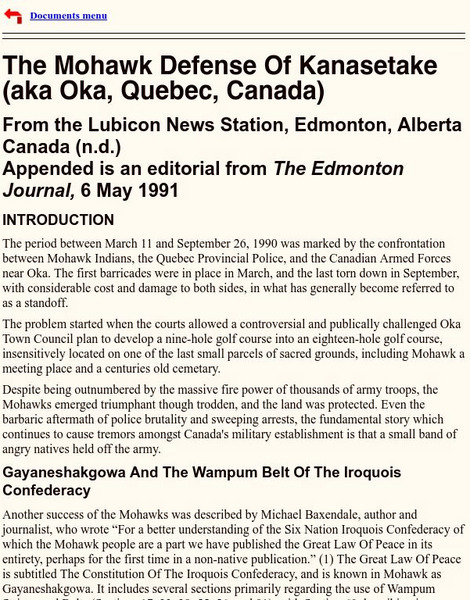A&E Television
History.com: After Wwii, Survivors of Nazi Horrors Found Community in Displaced Persons Camps
Though the legacy of World War II Nazi death camps looms over Europe, a lesser-known camp network arose after the war with a diametrically opposed vision: to give traumatized populations a new lease on life. Established by the victorious...
Hartford Web Publishing
World History Archives: Wha: History of the National Trade Union Centre
From here, access recent documents, each of which address events and people related to the National Trade Union Centre (NATUC).
A&E Television
History.com: What Happened to Twa Flight 800?
Minutes after its take off from New York's Kennedy International Airport, a Boeing 747 headed for Paris exploded midair over the Atlantic Ocean off the coast of Long Island on July 17, 1996, leaving all 230 people aboard dead. The...
A&E Television
History.com: Black Heroes Throughout Us Military History
Meet the standout soldiers, spies and homefront forces who fought for America, from the Revolution to World War II. During the American Revolution, thousands of Black Americans fought -- on both sides of the conflict. As America's Civil...
BBC
Bbc: History: Hitler and 'Lebensraum' in the East
History professor Jeremy Noakes explores Hitler's quest to acquire more land for the German people to populate. He traces the origins of Lebensraum and discusses why Hitler was committed to the east to expand.
Hartford Web Publishing
World History Archives: The Mohawk Defense of Kanasetake
Students looking for a different perspective on the Oka Crisis get it here. The Lubicon Nation is an Aboriginal community in northern Alberta. They have reprinted on this website an opinion from Lubicon News Station, and part of an...
A&E Television
History.com: How Five of the World's Worst Pandemics Finally Ended
As human civilizations flourished, so did infectious disease. Large numbers of people living in close proximity to each other and to animals, often with poor sanitation and nutrition, provided fertile breeding grounds for disease. And...
A&E Television
History.com: What Prehistoric Cave Paintings Reveal About Early Human Life
Some of the oldest known art may hint at the beginning of language development, while later examples portray narratives with human and animal figures. What does the oldest known art in the world tell us about the people who created it?...
Khan Academy
Khan Academy: Us History: 1491 1607: Environmental/health Effects in New World
European arrival in the Americas decimated both indigenous people and previously-flourishing ecosystems.
A&E Television
History.com: 5 Things You May Not Know About Kwanzaa
As millions of people around the world prepare to celebrate Kwanzaa, explore five things you may not know about this pan-African holiday.
A&E Television
History.com: How the End of the Vietnam War Led to a Refugee Crisis
The fall of Saigon in April 1975 marked the close of the war, but also the beginning of one of the largest and longest refugee crises in history. Over the next two decades -- from 1975 to 1995 -- more than three million people fled...
A&E Television
History.com: 7 Foods Developed by Native Americans
These seven dietary staples were cultivated over thousands of years by Indigenous peoples of America. While Indigenous diets and foodways were deeply impacted by European settlement, Indigenous American foods also changed the world....
A&E Television
History.com: The Native American Chief Who Drove Out Spanish Colonists and Nearly Expelled the English
In the summer of 1561, Spanish explorers abducted Opechancanough, a Powhatan Indian youth from the Chesapeake Bay tidewater region and brought him to the royal court of Spain. The kidnapping set off a chain of events that would alter the...
A&E Television
History.com: How the u.s. Constitution Has Changed and Expanded Since 1787
Through amendments and legal rulings, the Constitution has transformed in some critical ways. The U.S. Constitution, written in 1787 and ratified by nine of the original 13 states a year later, is the world's longest-surviving written...
A&E Television
History.com: World Trade Center
The iconic twin towers of downtown Manhattan's World Trade Center were a triumph of human imagination and will. Completed in 1973, the towers stood at 110 stories each, accommodating 50,000 workers and 200,000 daily visitors in 10...
Other
Saudi Aramco World: Keyboard Calligraphy
In a recent exhibition on Ottoman culture held in Amsterdam's Nieuwe Kerk was an unimpressive-looking little 18th-century book, a printed version of a manuscript produced 150 years earlier. Usually a manuscript is more rare than a...
Encyclopedia Britannica
Encyclopedia Britannica: 300 Women Who Changed History: Margaret Mead
Encyclopedia Britannica provides a biography of Margaret Mead, noted anthropologist and prolific author.
PBS
Pbs Learning Media: Decolonizing the Map: Creating the Indigenous Mapping Collective
For many Indigenous communities, mapping plays a large role in reclaiming their lands. Mapping is not new to Indigenous peoples, in fact, some of the world's earliest maps can be seen in cave paintings or heard in the stories that have...
PBS
Pbs Learning Media: Malala Devotes Second Life to Girls' Rights: Pbs News Hour
"Today you can see that I'm alive," said Malala Yousafzai in her first interview since surviving a Taliban attack that left her with a bullet lodged in her skull last October. "This is a second life," she continued, "And I want to serve....
Ducksters
Ducksters: Early Islamic World Trade and Commerce
Find out how people in the early Islamic world used their resources for commerce and trade.
Houghton Mifflin Harcourt
Harcourt: School Publishers: Taino Indian City Found
Read about a Taino Indian city discovered in the Dominican Republic. Includes two discussion questions you can use to check reading comprehension. Bilingual Spanish/English.






